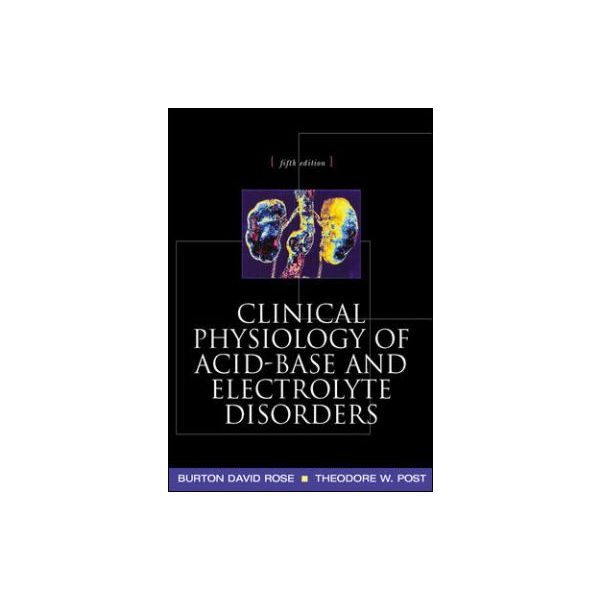CLINICAL PHYSIOLOGY OF ACID-BASE N ELECTRO DISORDERS
“The core of information that the clinician should possess” -- From the Preface
Like its highly acclaimed predecessors, the Fifth Edition of this classic effectively integrates the essentials of renal and electrolyte physiology with the common clinical disorders of acid-base and electrolyte balance.
FEATURES:
*An easy-to-read writing style that demystifies this difficult subject
*Basic science coverage of water and electrolyte physiology, renal physiology, and regulation of water and electrolyte balance
*Clinical chapters that quickly guide you through key points of etiology, pathophysiology, symptoms, diagnosis, and treatment of common disorders
*Crystal clear figures and handy tables that summarize key information
*End-of-chapter problems that test mastery of the material
NEW IN THIS EDITION:
*New sections on endothelin and nitric oxide
*State-of-the-art information on the properties of the calcium-sensing receptor
*Revised and expanded coverage of the neurologic sequelae of hyponatremia
*In-depth discussion of the edematous states, including heart failure, nephrotic syndrome, and cirrhosis
*Hundreds of new references
| Author | ROSE |
|---|---|
| Table Of Content | Part One: Renal Physiology. Chapter 2: Renal Circulation and Glomerular Filtration Rate. Chapter 4: Loop of Henle and the Countercurrent Mechanism. Chapter 6: Effects of Hormones on Renal Function. Chapter 7: The Total Body Water and the Plasma Sodium Concentration. Chapter 9: Regulation of Plasma Osmolality. Chapter 11: Regulation of Acid-Base Balance. Part Three: Physiologic Approach to Acid-Base and Electrolyte Disorders. Chapter 14: Hypovolemic States. Chapter 16: Edematous States. Chapter 18: Metabolic Alkalosis. Chapter 20: Respiratory Acidosis. Chapter 22: Introduction to Disorders of Osmolality. Chapter 24: Hyperosmolal States - Hyponatremia. Chapter 26: Introduction to Disorders of Potassium Balance. Chapter 28: Hyperkalemia.Chapter 30: Summary of Equations and Formulas. |





